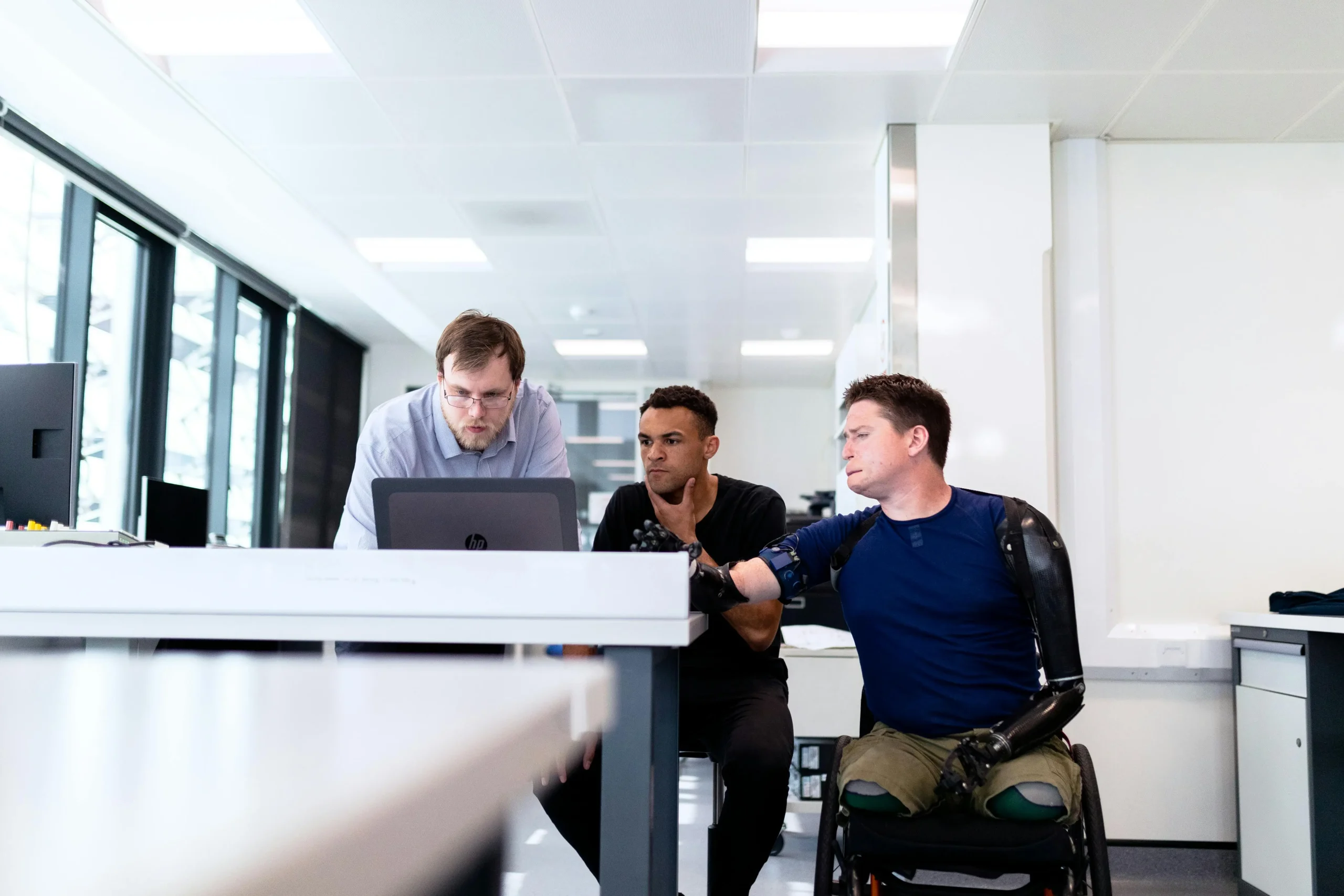Accessibility in the workplace is no longer just a “nice-to-have” – it’s a necessity. Companies worldwide are realizing the value of inclusion, creating environments that welcome diverse talents and empower people with disabilities to thrive. Here are five trailblazing companies whose accessibility initiatives are setting a gold standard for others.
“Inclusivity isn’t just about opening doors; it’s about designing spaces where everyone can succeed.”
Microsoft’s Commitment to Inclusive Tech Accessibility
Breaking Barriers with Accessible Software Accessibility
Microsoft has long championed accessibility through innovations like the Xbox Adaptive Controller and screen readers built into Windows. These tools don’t just break barriers; they open up new opportunities for individuals with disabilities.
How Microsoft Empowers Employees Accessibility with Disabilities
Microsoft’s Inclusive Hiring program provides tailored resources for employees with disabilities, ensuring their unique needs are met. Initiatives like these showcase how inclusivity fosters loyalty and creativity in the workplace.
Key Lessons for Other Companies
Microsoft’s success stems from its belief that accessible design benefits everyone. Companies can emulate this by embedding accessibility into every stage of product development.
Starbucks’ Deaf-Friendly Store Initiative Accessibility
Creating a Sign Language-Friendly Work Environment
Starbucks opened its first deaf-friendly store in Washington, D.C., staffed by employees proficient in American Sign Language (ASL). This initiative highlights the importance of catering to both Accessibility employees and customers.
The Impact of Accessibility on Customer and Employee Experiences
By creating an environment where everyone feels seen and heard, Starbucks has enhanced its brand loyalty while setting an example for others.
Expansion Plans for Accessibility Globally
The company is now exploring how these stores can be replicated in other regions, signaling a global commitment to inclusion.
Google’s Accessibility Journey
Designing Technology for Everyone
Google ensures that its products, from Google Maps to Chrome, are accessible to people with various disabilities. Features like live captions and accessible navigation demonstrate their commitment.
Accessibility Training for Employees
Google trains its Accessibility employees to prioritize accessibility in design and innovation, fostering a culture that values diverse perspectives.
Why Accessibility Innovation Drives Business Success
When products work for everyone, companies like Google expand their user base, turning inclusivity into a competitive advantage.
SAP’s Autism at Work Program
Tapping Into Neurodiverse Talent
SAP’s Autism at Work program has revolutionized the tech industry by recognizing the unique strengths of neurodiverse individuals. Accessibility Employees with autism excel in roles requiring attention to detail and problem-solving.
Real-Life Success Stories from SAP Employees
Many Accessibility employees have shared how SAP’s supportive environment has allowed them to flourish, proving that accessibility transforms lives.
Steps Other Companies Can Take to Follow SAP’s Lead
By partnering with organizations that specialize in neurodiversity, companies can create similar programs to tap into untapped talent pools.
EY’s Inclusivity Leadership
Building Accessible Career Paths for All
EY has introduced programs that help individuals with disabilities navigate their careers, offering mentoring and tailored development plans.
Programs Supporting Employees with Disabilities
From assistive technologies to inclusive workspaces, EY’s initiatives are a testament to the power of thoughtful leadership.
EY’s Advocacy for Global Workplace Inclusion
EY’s advocacy extends beyond its walls, encouraging other organizations to prioritize accessibility as a core value.
Common Challenges and How Companies Overcame Them
Overcoming Accessibility Myths
Many companies fear that accessibility is too expensive or complex. These stories prove otherwise – small steps can lead to significant impacts.
The Role of Technology in Bridging Gaps
From voice recognition tools to adaptive hardware, technology makes accessibility achievable for businesses of all sizes.
The Benefits of Embracing Accessibility
Improved Employee Morale and Retention
Inclusive workplaces boost Accessibility employee satisfaction, fostering loyalty and reducing turnover.
Enhanced Innovation and Market Reach
Accessibility fuels innovation, enabling companies to reach untapped markets while showcasing their commitment to social responsibility.
Practical Tips for Businesses to Get Started
Steps for Creating an Accessibility Action Plan
Start by auditing your workplace, gathering feedback, and identifying areas for improvement.
Training Programs to Build Awareness
Educating Accessibility employees about accessibility ensures a culture of inclusion that goes beyond policies.
Conclusion
These companies remind us that accessibility isn’t just a moral imperative—it’s a business advantage. By creating inclusive spaces, we don’t just change workplaces; we change lives.
FAQs
- What is workplace accessibility?
Workplace accessibility ensures environments, tools, and policies accommodate everyone, including individuals with disabilities. - How can small businesses implement accessibility measures?
Start with small changes, like offering assistive technologies and flexible workspaces. - What are some common accessibility myths?
One common myth is that accessibility is costly, but many solutions are affordable or free. - How does accessibility benefit companies financially?
Accessibility increases employee productivity, market reach, and customer satisfaction. - What industries are leading in workplace accessibility?
Tech, retail, and consulting firms are at the forefront of workplace inclusion. - What’s the first step to creating an inclusive workplace?
Conducting an accessibility audit is a great place to start. - How can technology assist with accessibility?
Tools like screen readers, voice recognition software, and adaptive devices make workplaces more inclusive. - Are there tax benefits for companies that embrace accessibility?
Many countries offer tax credits or deductions for implementing accessibility measures. - What is the role of leadership in promoting accessibility?
Leaders set the tone by prioritizing accessibility and allocating resources to make it happen. - How can employees advocate for better accessibility at work?
Accessibility Employees can share feedback, join inclusion committees, and champion accessibility initiatives within their organizations.
Internal Links:
- https://equalcapablejobs.com
- Top Tips for Finding Jobs for People with Disabilities
- The Benefits of Disability Inclusion: Why Your Company Needs It
- Essential Skills for Career Growth in the Disability Community













